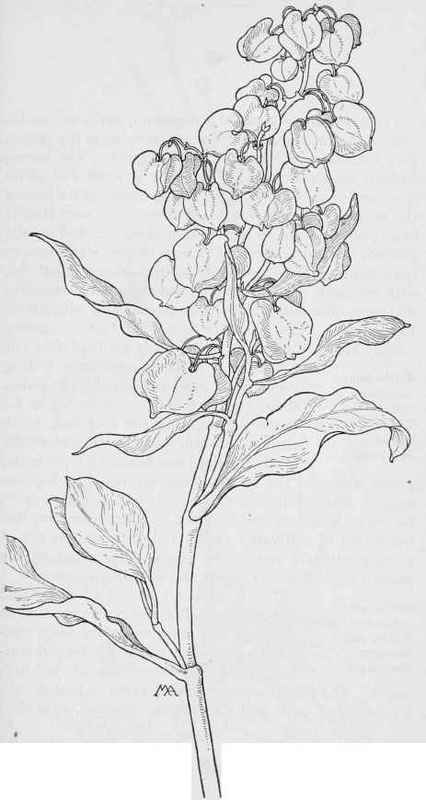Sand Dock. Rumex Venosus. Greenish. Spring, Summer. West
Description
This section is from the book "Field Book Of Western Wild Flowers", by Margaret Armstrong. Also available from Amazon: Field Book Of Western Wild Flowers.
Sand Dock. Rumex Venosus. Greenish. Spring, Summer. West
In favorable situations this is a very handsome member of a rather plain genus, about a foot tall, with a smooth, stout reddish stem and smooth, pale, blue-green leaves, that feel like thin rubber, with a prominent mid-vein front and back. The small inconspicuous flowers develop into clusters of showy valves or wings, wonderfully odd and beautiful in coloring, resembling Begonia flowers. At first these wings are pale green, but they gradually brighten until they are all shades of salmon, rose-color, and red, fading to brown, and forming lovely combinations of vivid color, particularly against the arid background of the sand hills they frequent, and they last a long time in water and are exceedingly decorative. If these wings, which are nearly an inch across, are pulled apart, a three-sided akene, like a little nut, will be found inside them.

Sand Dock Rumex venosus. BUCKWHEAT FAMILY. Polygonaceae.
There are many kinds of Eriogonum, herbs or shrubs, natives of America, mostly western, growing in dry places, very numerous and difficult to distinguish. The leaves, without sheaths or stipules, are often covered with white down and usually grow in a spreading cluster at the base of the stem. The numerous small flowers, on very slender little pedicels, have six sepals, thin in texture and usually colored, and form clusters of various shapes, which emerge from more or less bell-shaped or top-shaped involucres, with six teeth. There are nine stamens, with threadlike filaments, often hairy, and a three-parted style with round-top stigmas. The name is from the Greek meaning "wooly knees," in allusion to the wooly joints of the stem.
Continue to:


